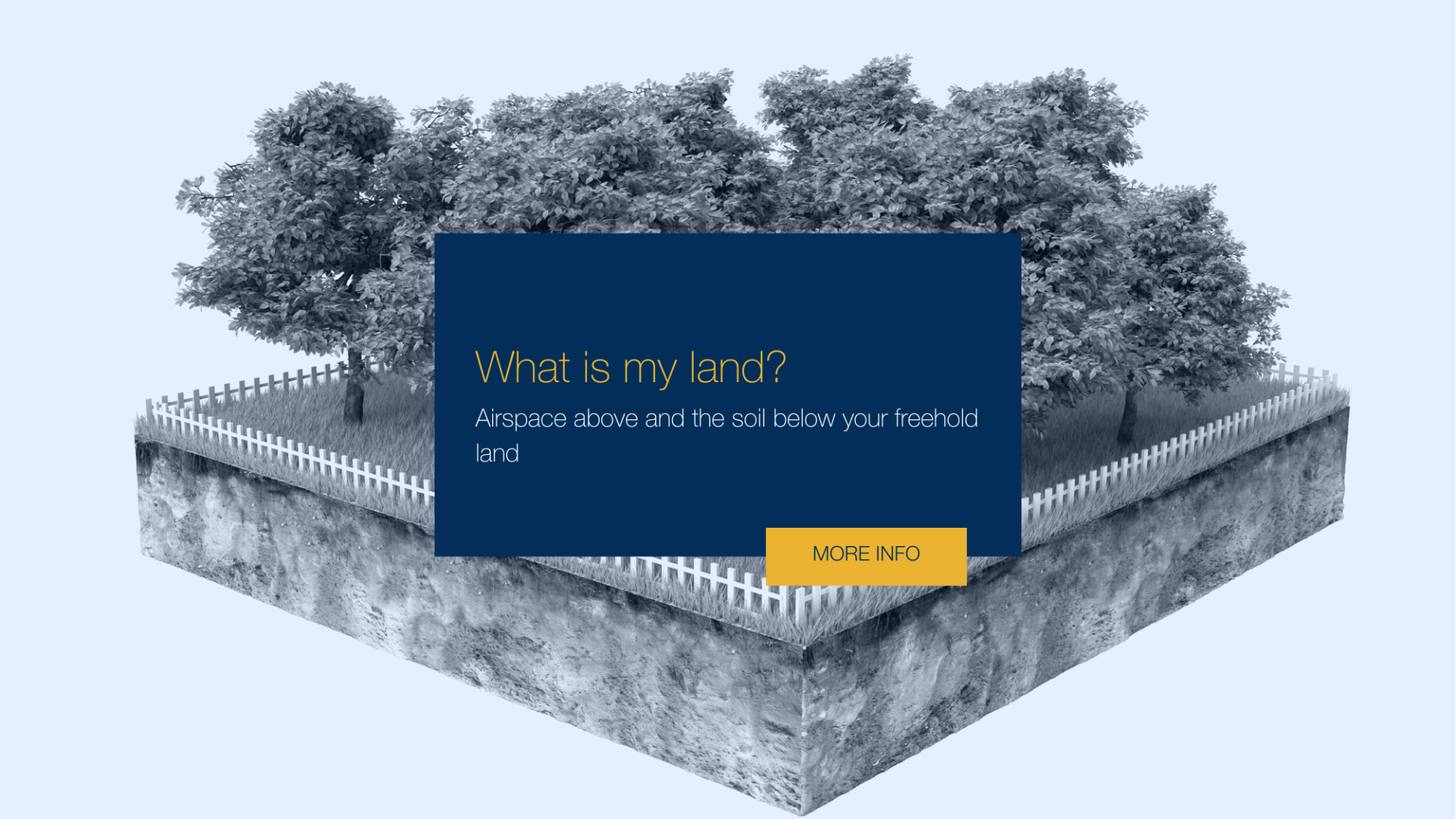What is my land
 By Shaun Adams
Subscribe to newsletter
By Shaun Adams
Subscribe to newsletterDefining 'Land'
Airspace above and the soil below your freehold land
What is your land? The legal definition of land has far more meanings than just the actually earth beneath our feet. What constitutes your land and therefore your belongings goes far beyond just your house and garden and there are many ways in establishing whether something like a running stream or overhanging tree belongs to you or a neighbour. Whether on, below or above your land there could be many things within the area of your land that is legally your property.
There are many definitions for what land actually means. The statutory definition is as follows;
Section 205(1)(ix) of the Law of Property Act 1925 defines land as including:
'land of any tenure, and mines and minerals … buildings or parts of buildings and other corporeal hereditaments; also … incorporeal hereditaments and an easement right privilege or benefit in over or derived from land'.
Basically the law governing land is concerned with the ownership of land, the rights, interests and obligations in, or over land, the process by which ownership and those rights and obligations are created, and transferred to others.
It can be seen that the statutory definition of land includes ,physical property (such as the soil and buildings which stand on it); and property which has no physical presence, e.g. an easement (the most common example of which is a right of way which one landowner has over land belonging to somebody else).
'Corporeal and incorporeal hereditaments are sometimes referred to together as 'realty' or 'real property', thereby distinguishing them for 'personality', i.e. personal or movable property.
“Corporeal hereditaments are lands, buildings, minerals, trees and all other things which are part of or affixed to land; in other words, the physical matter over which ownership is exercised.
“Incorporeal hereditaments, on the other hand, are not things at all, but rights. Certain rights were classified as real property The most important incorporeal hereditaments are easements, profits and rentcharges, but there are others also.
The definition of land can also be taken from the Latin phrase, 'cuius est solum, eius est usque ad coelum et ad inferos'. Which basically translates to 'he who owns land does so up to the heavens and down to the centre of the earth'
This Latin phrase can be quite misleading as the definition is subject to some qualifications. These include airspace, trees, plants and flowers, wild animals, water, mines and minerals.
Airspace
The common law distinguishes between two different types of airspace. The lower and Upper stratum.
The lower stratum is concerned with the portion immediately above the land and interference with this air space would effect the landowner's reasonable enjoyment of the land and the structures upon it.
Wrongful intrusions include; Overhanging branches of a neighbours trees and plants or projecting eaves or advertising signs and Booms of cranes being used for construction work on neighbouring land.
The Higher Stratum is something which exists above the height which is reasonably acceptable and necessary for the ordinary use and enjoyment of the land by it's owner. The landowner has no greater rights to this airspace than any other member of the public.
S. 76 Civil Aviation Act 1982 states that 'the lower stratum is unlikely to extend beyond an altitude of much more than 500 or 1,000 feet above roof level, this being roughly the minimum permissible distance for normal overflying by any aircraft' (Rules of the Air Regulations 2007, Sch 1, s. 3(5)).
Trees, Plants and Flowers
A persons Land includes any trees, shrubs, hedges, plants and flowers, whether planted by the owner(s) themselves or whether they have grown wild on the landowners property.
Wild Animals
Whilst wild animals are alive , they cannot be subject to absolute ownership by anyone. The owner of the land on which the wild animals have chosen to inhabit only has a 'qualified property' in them. This will entitle the landowner to hunt, catch or kill the wild animals on his/her property. Once the wild animals are caught and killed, whether this be by the land owner himself or by an unauthorised trespasser, the wild animals then become property of the owner. The courts first dealt with this in Blades v Higgs 1865.
Water
In English law, water which passes through someone's land or flows through the land in an undefined channel is incapable of being owned by someone. Where the water runs through a known channel the owner of the land and channel in which the water has flown has certain rights. For example, they will have the rights to the fish in that water, the rights to the flow of water through the owners land that has been unaltered in volume or quantity. These rights are still subject to the reasonable use by the owner of the water flow from up stream.
In most cases regarding water flow through someone's land, the landowner cannot abstract water without a granted license by the water authority. The exception to this rule is where the water is taken for use on a holding comprising the upper stream land and any other land held with it, and where the use is for either 1) the domestic purpose of the occupier's household or for 2) agricultural purposes other than 'spray irrigation' ( spray irrigation being the commonly used system of dispersing water through land, most commonly by some form of machinery).
Mines and Minerals
Under the common law of England and Wales, all mines and minerals which lie beneath the soil of the land owned by the landowner belongs absolutely to the landowner. There are a few exceptions to this rule I.e. coal ( by which S.9 Coal Industry Act 1994 vests in the coal Authority). All the rights in petroleum including mineral oil and natural gas found beneath or on a landowners property are property of the crown under S.2 Petroleum Act 1998. The Crown is also entitled to all gold and silver found in gold and silver mines on or beneath anyone's property.
Rights Above and Below the Surface of Land
Historically it was considered that the land owner owned everything above and below the surface of the land. Cuius est solum eius est usque ad coelum et ad inferos was said to apply – meaning whoever owns the soil owns everything up to the heavens and down to the depths of the earth. This, however, is no longer strictly the case and there is no absolute right in respect of the airspace above the land and things below the surface of the land.
Rights above the land
A landowner owns the airspace above his land and may bring an action for trespass against an intruder or where another places an object which projects into their airspace:
The right to airspace above land is restricted to such a height as is reasonably necessary for the ordinary use and enjoyment of his land and the structure upon it:
Rights below the surface of the land
Right to spaces below the surface
Man made and natural spaces below land are capable of ownership. The space belongs to the owner of the surface of the land even if it was created by another and the landowner has no access:
Rights to minerals in the land
The owner is generally entitled to the minerals within the land but this is subject to the rights of the Crown in relation to oil, coal, natural gas, gold and silver.
Rights to items found in the land
Items found below the surface of the land belong to the landowner:
Unless they are items of treasure trove under the Treasure Act 1996
Whereas with regards to items found on the surface of the land, which are not treasure trove and the owner can not be found, the finder has a better title than the land owner:
Unless the land owner exercises sufficient control and the finder is a trespasser.
Need any property advice – contact Cooper Adams.
source e-lawresources.co.uk and inbrief.co.uk


